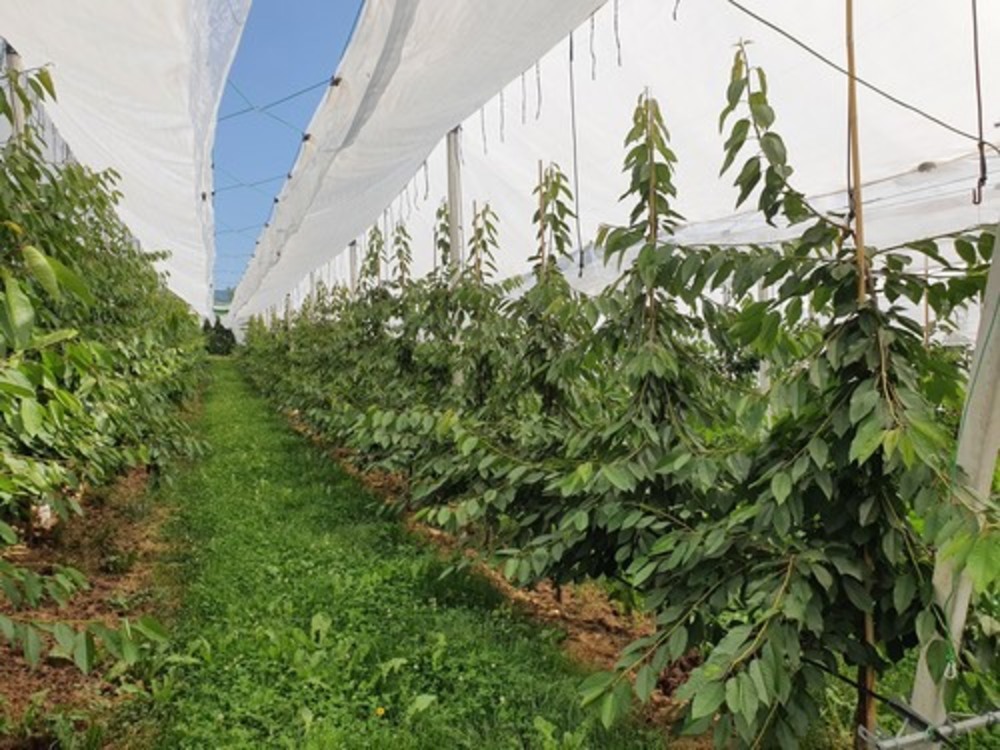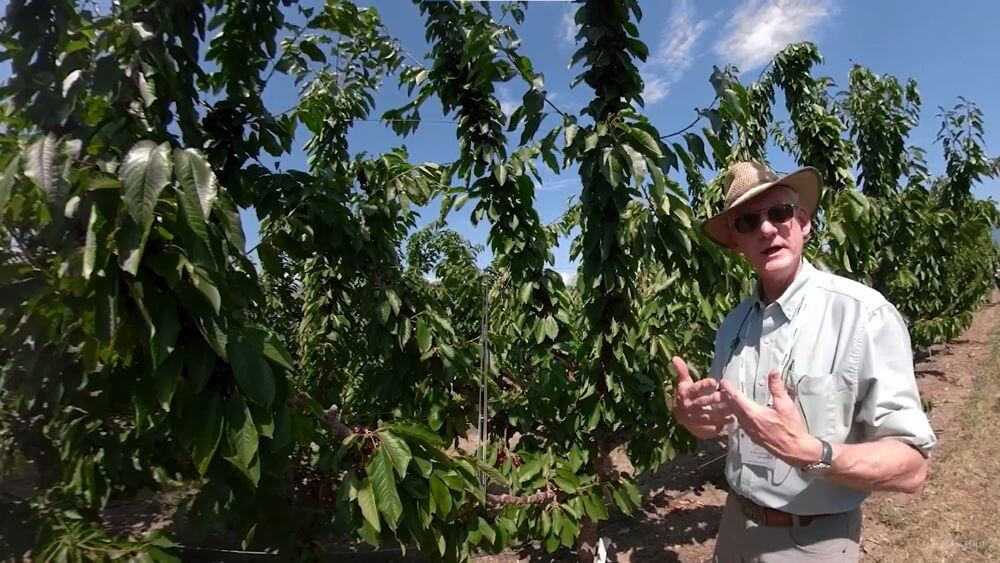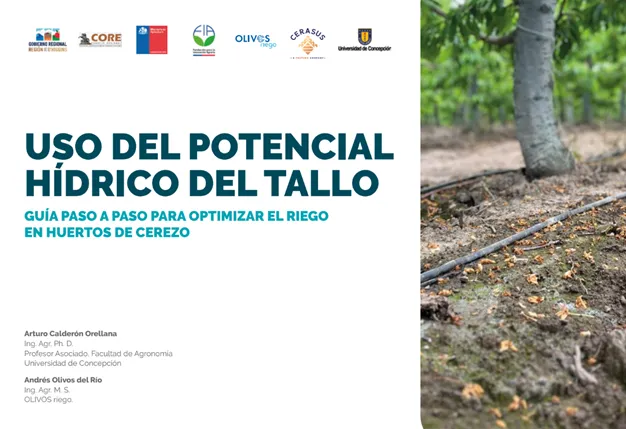
A step-by-step guide to achieving efficient irrigation in cherry production has been published by Olivos Spa, Agronomía UdeC, and Cerasus, thanks to the support of the Agricultural Innovation Fund (FIA) through the project “Development and determination of the baseline water potential of cherry cultivation, using microtensiometers and controlled deficit irrigation, to develop a new and more efficient irrigation monitoring and scheduling service.”
In this manual, the project team, led by agronomist Andrés Olivos (Olivos Spa) and Dr. Arturo Calderón (Agronomía UdeC), provides guidelines on how to use stem water potential measurement to precisely schedule irrigation frequency in cherry trees based on physiological parameters.
The goal of this initiative is to help farmers better manage water in their cherry orchards, especially now that limited water availability is combined with increasing atmospheric evaporation demand. The work supporting the cherry irrigation manual was developed over three consecutive years in the orchards of the Cerasus company, located in the municipality of Placilla, in the O'Higgins region.
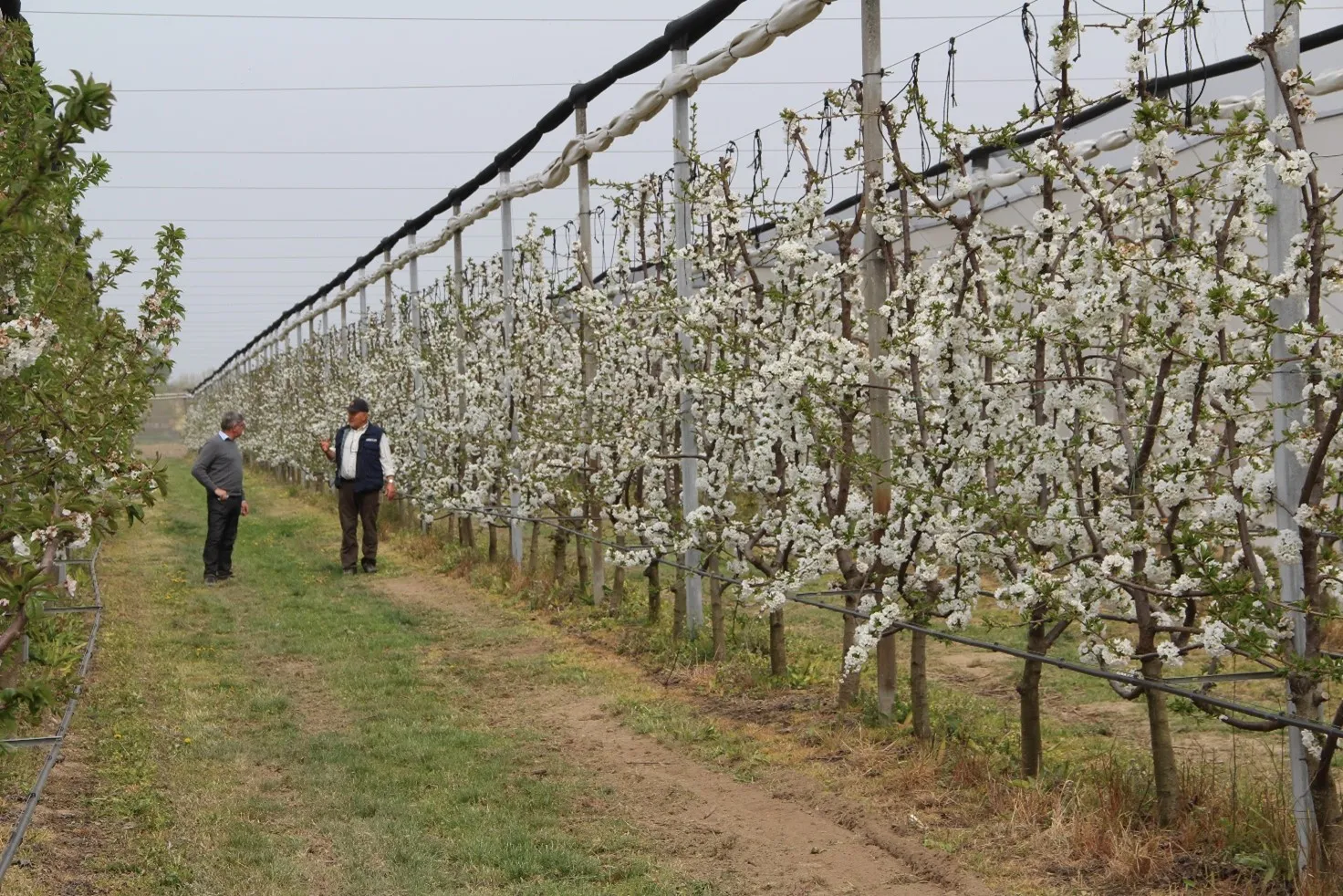
“This research project aimed to adapt irrigation practices to the physiological needs of cherry trees, in order to avoid over-irrigation or implement a controlled deficit irrigation program for this species.
In this context, cherry trees, compared to other fruit species, have a very long period between harvest and senescence, during which they are often subjected to arbitrary reductions in irrigation due to the mistaken belief that, since they lack fruit, the plants require less water," commented Arturo Calderón, associate professor in the Department of Plant Production at the Faculty of Agronomy of the University of Concepción, who, together with Andrés Olivos, is one of the authors of this manual.
Regarding the above, he stated that "this is completely wrong, as it is during this time of year that fruit trees typically show the highest water demand of the season. Therefore, our project, through the use of water potential measurement, provides an objective method to determine when to irrigate based on the plant's state, rather than the soil or the environment.
The expert adds that cherry trees in the central and south-central zones of Chile are mostly harvested starting in December, leaving about six months during which this fruit tree is subjected to maximum evaporative demand, contrasting with minimal water availability for irrigation.
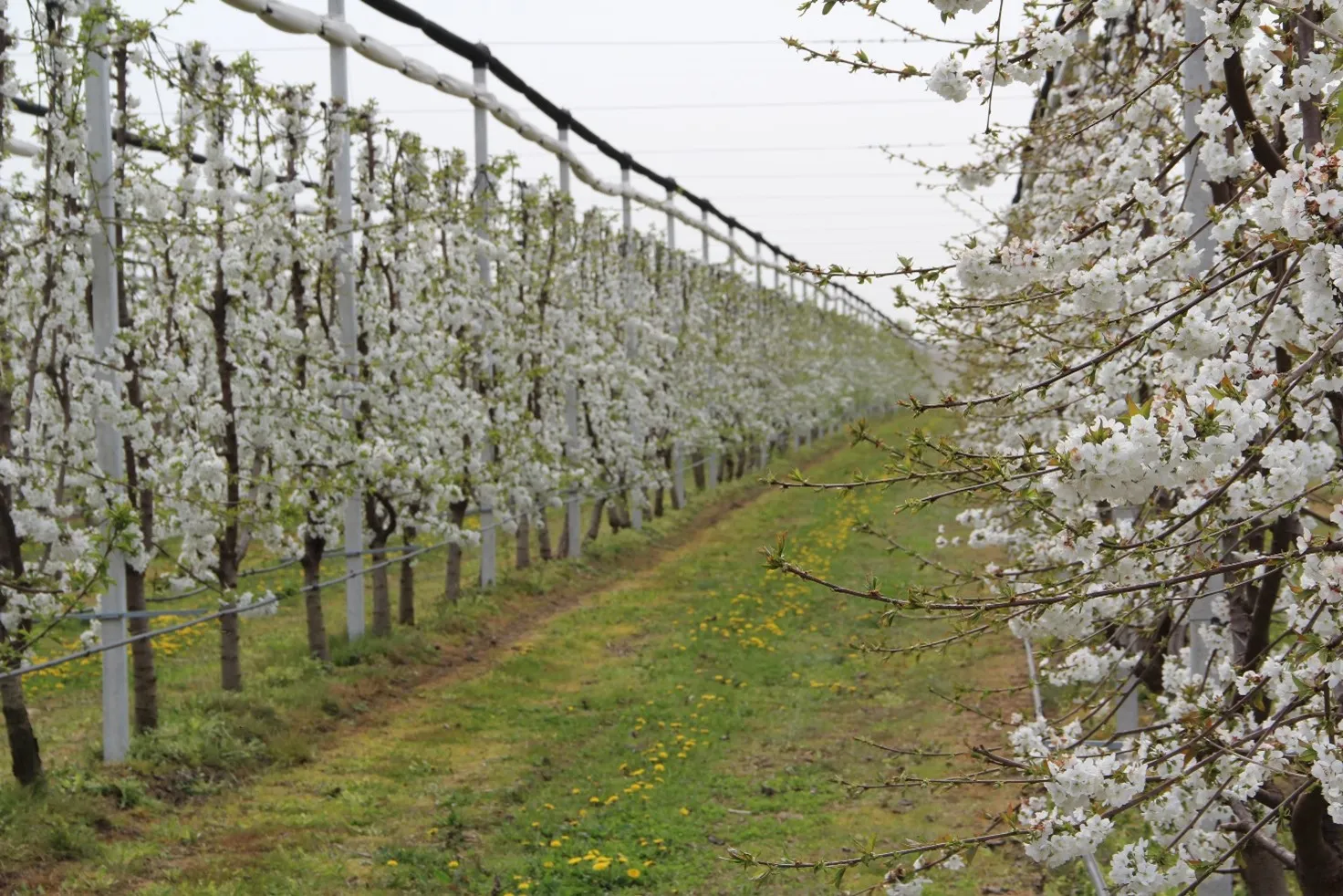
"As a result, it is imperative to test controlled deficit irrigation strategies to save water after harvest in order to continue cultivating this highly important fruit species," he stated. Finally, Calderón added that, among other relevant aspects of this manual, there are two techniques that can be used to evaluate the stem water potential of cherry trees.
On one hand, there is the classic measurement method using the “Scholander pump” (pressure chamber), and the second, very innovative and robust, involves a plant microtensiometer.
"This research is one of the first works in the world where the plant microtensiometer is used to manage a controlled deficit irrigation strategy, which fills us with pride as we are at the forefront of agronomic knowledge on the sustainable use of water resources in fruit growing,” Calderón said.
Those wishing to read the manual can download it from the website www.agronomiaudec.cl or via the link: https://drive.google.com/file/d/1-zYe6y3gFTue6TWKe2vad7gHB4GGKG7V/view?usp=sharin.
Source: Portal Frutícola
Images: Portal Frutícola; SL Fruit Service
Cherry Times - All rights reserved







